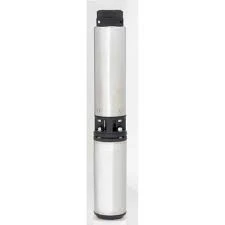Nov . 12, 2024 12:19 Back to list
how to pull a submersible well pump
How to Pull a Submersible Well Pump
Submersible well pumps are essential for extracting groundwater from deep underground sources. Over time, these pumps may require maintenance, repairs, or even replacement. Pulling a submersible well pump can be a challenging task, but with the right tools, techniques, and safety precautions, it can be accomplished. This article outlines the process of pulling a submersible well pump effectively and safely.
Understanding the Components
Before embarking on the task, it's crucial to understand the components involved in a submersible well pump. The main parts include the pump itself, which is submerged in water, the motor that drives it, and the discharge head, which is located above ground. The pump is connected to a drop pipe that transports water to the surface. Electrical lines usually provide power to the motor, and these need to be considered when pulling the pump.
Safety First
Whenever dealing with electrical equipment and heavy machinery, safety is paramount. Always wear appropriate personal protective equipment (PPE), such as gloves, safety goggles, and hard hats. Ensure that the power supply to the pump is turned off at the circuit breaker to avoid any electrical hazards.
Tools and Equipment
To pull a submersible well pump, you’ll need several tools and equipment. While not exhaustive, here’s a list of essential items
1. Pipe Wrench To grip and unscrew the fittings. 2. Ratcheting Straps or Hoisting System To harness and pull the pump from the well. 3. Safety Rope As a backup in case the primary hoisting system fails. 4. Buckets or Containers For any water that might spill during the process. 5. Adjustable Wrench To loosen and tighten connections. 6. Pliers and Cutters For handling various fittings and wires. 7. Flashlight For visibility inside the well, especially if it's deep.
The Pulling Process
Step 1 Prepare the Well
Begin by ensuring that the area around the well is clean and accessible. Remove any debris or overgrown vegetation that might obstruct the work area. Next, secure the well cap or cover to prevent any accidents during the pulling process.
Step 2 Disconnect the Electrical Supply
how to pull a submersible well pump

At the circuit breaker, turn off power to the pump. Verify that the electricity is off using a multimeter or voltage tester to ensure there’s no risk of electric shock.
Step 3 Remove the Well Head Assembly
Using your pipe wrench, carefully remove the well head assembly. This is where the discharge pipe meets the well casing. Be cautious not to damage any surrounding components, as this may lead to leaks or other issues.
Step 4 Prepare the Pulling Equipment
Attach the hoisting system or ratcheting straps securely to the pump. Make sure the straps are well-positioned to evenly distribute the weight of the pump to avoid any undue stress on it.
Step 5 Start Pulling the Pump
With a helper if possible, begin to pull the pump out of the well slowly and steadily. Ensure the pipe remains straight to avoid kinking, which can damage the pump. It's essential to communicate with your helper during this stage to ensure coordination.
Step 6 Inspect the Pump
Once the pump is out of the well, inspect it for any damage, wear, or blockage. Check the motor and impeller for signs of wear and replace any damaged parts as necessary. Clean and maintain the pump to prolong its life.
Step 7 Reinstallation (if applicable)
If the pump is still functional and simply needed maintenance, reverse the pulling process for reinstallation. Ensure all connections are tight and secure before restoring the electrical supply.
Conclusion
Pulling a submersible well pump may seem daunting, but with careful planning and execution, it can be done safely. Always prioritize safety and utilize the right equipment. Should you encounter significant issues during the process, don't hesitate to reach out to a professional for assistance. Regular maintenance of your well pump will ensure its longevity and efficiency, providing reliable access to groundwater for years to come.
-
Submersible Water Pump: The Efficient 'Power Pioneer' of the Underwater World
NewsJul.01,2025
-
Submersible Pond Pump: The Hidden Guardian of Water Landscape Ecology
NewsJul.01,2025
-
Stainless Well Pump: A Reliable and Durable Pumping Main Force
NewsJul.01,2025
-
Stainless Steel Submersible Pump: An Efficient and Versatile Tool for Underwater Operations
NewsJul.01,2025
-
Deep Well Submersible Pump: An Efficient 'Sucker' of Groundwater Sources
NewsJul.01,2025
-
Deep Water Well Pump: An Efficient 'Sucker' of Groundwater Sources
NewsJul.01,2025
-
 Submersible Water Pump: The Efficient 'Power Pioneer' of the Underwater WorldIn the field of hydraulic equipment, the Submersible Water Pump has become the core equipment for underwater operations and water resource transportation due to its unique design and excellent performance.Detail
Submersible Water Pump: The Efficient 'Power Pioneer' of the Underwater WorldIn the field of hydraulic equipment, the Submersible Water Pump has become the core equipment for underwater operations and water resource transportation due to its unique design and excellent performance.Detail -
 Submersible Pond Pump: The Hidden Guardian of Water Landscape EcologyIn courtyard landscapes, ecological ponds, and even small-scale water conservancy projects, there is a silent yet indispensable equipment - the Submersible Pond Pump.Detail
Submersible Pond Pump: The Hidden Guardian of Water Landscape EcologyIn courtyard landscapes, ecological ponds, and even small-scale water conservancy projects, there is a silent yet indispensable equipment - the Submersible Pond Pump.Detail -
 Stainless Well Pump: A Reliable and Durable Pumping Main ForceIn the field of water resource transportation, Stainless Well Pump has become the core equipment for various pumping scenarios with its excellent performance and reliable quality.Detail
Stainless Well Pump: A Reliable and Durable Pumping Main ForceIn the field of water resource transportation, Stainless Well Pump has become the core equipment for various pumping scenarios with its excellent performance and reliable quality.Detail
